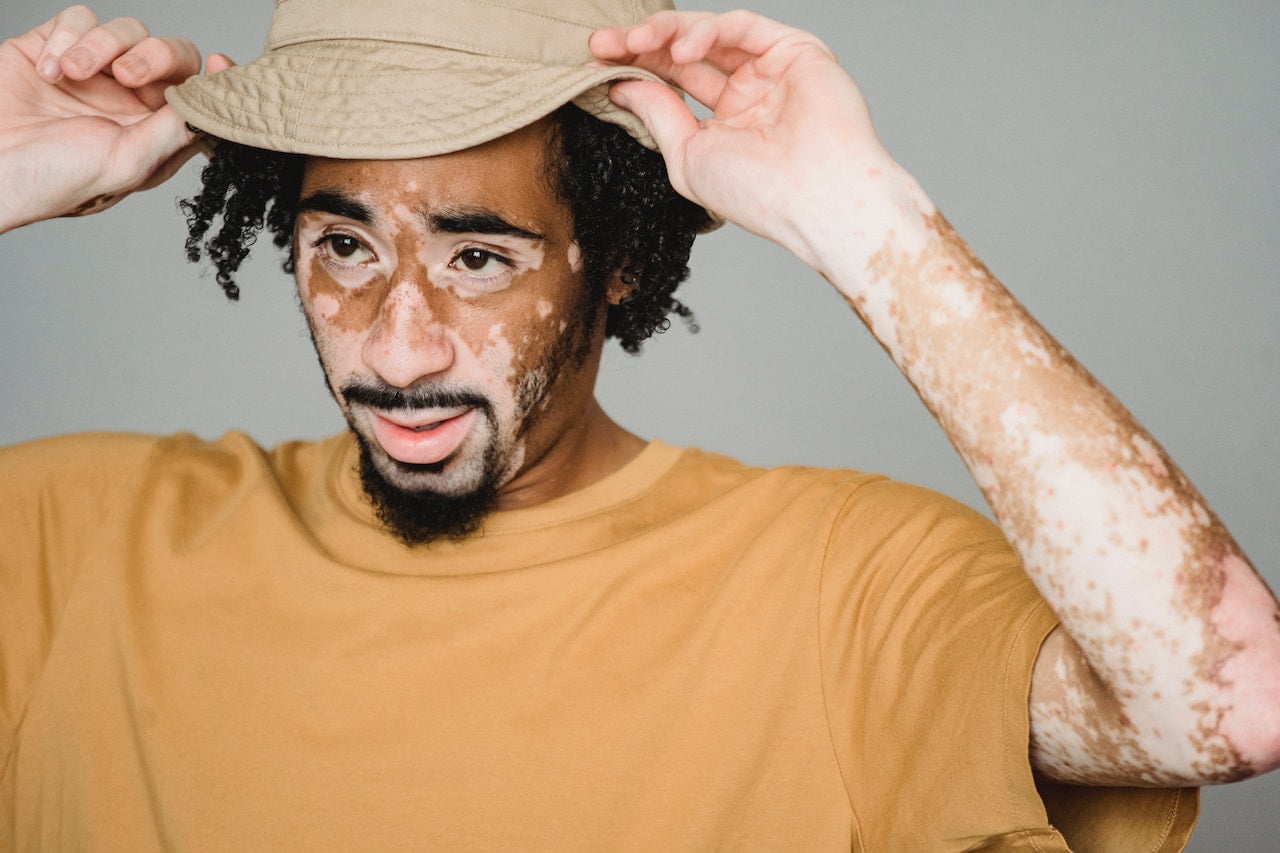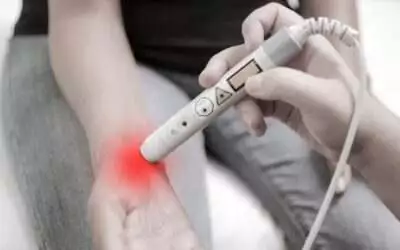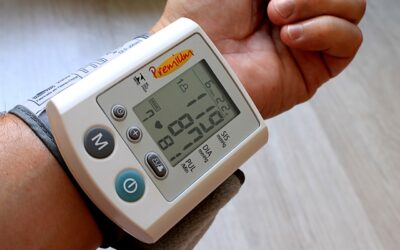If you have vitiligo, you may have felt self-conscious or even embarrassed. You may have even experienced anxiety or depression due to your condition. The good news is that there are many treatments and home remedies available that can help you to manage your symptoms and improve your quality of life. In this ultimate guide, we’ll explore what vitiligo is, its causes, symptoms, traditional treatments, natural remedies, diet and lifestyle changes, mental health effects, coping strategies and how to cure vitiligo naturally.
What is Vitiligo?
Vitiligo is a chronic skin condition characterized by the loss of pigmentation in certain areas of the skin, resulting in white patches. This occurs due to the destruction of melanocytes, the cells responsible for producing melanin, which gives color to our skin, hair and eyes. Vitiligo can affect people of all ages, races and genders, but it is more noticeable in individuals with darker skin tones. While vitiligo does not pose any significant health risks, it can have a profound impact on an individual’s self-esteem and quality of life, leading to emotional and psychological challenges.
Causes of Vitiligo.
Vitiligo is a skin condition characterized by the loss of pigment in certain areas of the skin, resulting in white patches. While the exact cause of vitiligo is not yet fully understood, several factors have been identified as potential contributors to the development of this condition. These causes can be broadly classified into genetic, autoimmune and environmental factors.
1. Genetic Factors.
One of the primary causes of vitiligo is believed to be genetic predisposition. Research has shown that certain genetic variations can increase the likelihood of developing vitiligo. Individuals with a family history of vitiligo have a higher risk of developing the condition, suggesting a hereditary component. Specific genes associated with vitiligo have been identified, including those related to melanocytes, the cells responsible for producing melanin, the pigment that gives color to the skin, hair and eyes.(1)
2. Autoimmune Factors.
Another significant cause of vitiligo is an autoimmune response. The immune system is designed to protect the body from foreign invaders, but in the case of vitiligo, it mistakenly attacks and destroys melanocytes. This autoimmune response is thought to be triggered by a combination of genetic and environmental factors, leading to the destruction of melanocytes and the subsequent depigmentation of the skin.
3. Environmental Factors.
Various environmental factors are believed to play a role in the development of vitiligo. These factors include exposure to certain chemicals, toxins and industrial solvents, which may trigger or worsen vitiligo in individuals predisposed to the condition. Additionally, prolonged sun exposure and sunburns have been associated with the onset of vitiligo, especially in individuals with fair skin.
4. Oxidative Stress.
Oxidative stress, caused by an imbalance between the production of reactive oxygen species (free radicals) and the body’s ability to neutralize them, has also been linked to vitiligo. This oxidative stress can damage melanocytes, leading to their destruction and subsequent loss of pigment.
5. Psychological Factors.
While not a direct cause, psychological factors such as stress and trauma have been identified as potential triggers or exacerbating factors for vitiligo. Emotional stress and trauma may disrupt the immune system and contribute to the development or progression of vitiligo in susceptible individuals.
*Note. It is important to note that the causes of vitiligo can vary from person to person and a combination of these factors may contribute to its development. Understanding these causes is crucial for developing effective treatment strategies and improving the quality of life for individuals living with vitiligo.
Symptoms of Vitiligo.
While the severity and progression of the disease can vary from person to person, there are six common symptoms that individuals with vitiligo may experience:
1. Depigmented Patches.
The primary symptom of vitiligo is the presence of depigmented patches on the skin. These patches can vary in size and shape and they often appear on sun-exposed areas such as the face, hands, arms, feet and genital areas. The color of these patches ranges from milky white to pale pink and the edges may be well-defined or irregular.
2. Symmetrical Distribution.
In many cases, vitiligo patches tend to occur symmetrically on both sides of the body. This means that if a patch develops on one hand, a similar patch may also appear on the other hand. This symmetrical distribution pattern is a common characteristic of vitiligo.
3. Rapid Progression.
The progression of vitiligo can be unpredictable. While some individuals may experience a slow and gradual spread of the depigmented patches over several years, others may notice a more rapid progression, with new patches appearing within a short period of time. The rate of progression varies from person to person and can be influenced by several factors, including stress and sun exposure.
4. Sensitivity to Sunlight.
People with vitiligo often have increased sensitivity to sunlight. Exposed areas of skin that have lost pigmentation are more susceptible to sunburn, which can further aggravate the condition. Therefore, individuals with vitiligo are often advised to wear sunscreen with a high SPF and protective clothing to minimize sun damage.
5. Premature Graying of Hair.
Another symptom commonly associated with vitiligo is the premature graying of hair. This can occur not only on the scalp but also in other hair-bearing areas, such as the eyebrows, eyelashes and facial hair. The loss of pigment in the hair follicles can lead to a striking contrast between the white patches of skin and the remaining pigmented hair.
6. Emotional and Psychological Impact.
Vitiligo can have a profound emotional and psychological impact on individuals, particularly due to its visibility and potential impact on self-esteem. Many people with vitiligo may experience feelings of self-consciousness, anxiety and depression. It is essential for those affected to seek emotional support and counseling to cope with the condition’s psychological challenges.
*Note. It is important to note that while these symptoms are commonly associated with vitiligo, they may not be present in every individual with the condition. Furthermore, the symptoms can vary in severity and may change over time. Seeking medical advice from a dermatologist is crucial for proper diagnosis and management of vitiligo.
Traditional Treatments for Vitiligo.
While there is no definitive cure for vitiligo, several traditional treatments have been found to help manage the condition and improve the appearance of the affected areas. Here are seven traditional treatments commonly used for vitiligo:
1. Topical Corticosteroids.
These are powerful anti-inflammatory creams or ointments that can help to reduce inflammation and re-pigment the skin. They are typically applied directly to the affected areas and require consistent use over a prolonged period to achieve noticeable results.
2. Topical Calcineurin Inhibitors.
Similar to corticosteroids, calcineurin inhibitors are applied topically to the affected areas. These medications work by suppressing the immune response in the skin, which can help to slow down or halt the progression of vitiligo and stimulate re-pigmentation.
3. Psoralen plus Ultraviolet A (PUVA) Therapy.
PUVA therapy involves taking a medication called psoralen, either orally or applied topically, followed by exposure to ultraviolet A (UVA) light. This combination helps to re-pigment the skin by stimulating the melanocytes (pigment-producing cells) in the affected areas.
4. Narrowband Ultraviolet B (NB-UVB) Therapy.
NB-UVB therapy is a form of phototherapy that uses a specific wavelength of ultraviolet B light to treat vitiligo. This treatment encourages re-pigmentation by stimulating melanocytes and suppressing the immune response in the skin.
5. Excimer Laser.
Excimer laser therapy focuses a high-intensity beam of ultraviolet B light on the white patches of vitiligo. This targeted approach helps to stimulate melanocyte activity and promote re-pigmentation. Excimer laser treatments are typically done over a series of sessions.
6. Micropigmentation (Tattooing).
Micropigmentation involves depositing pigment into the skin using a specialized tattooing technique. This treatment can help to camouflage the white patches of vitiligo and create a more even skin tone. It is a non-invasive option for those seeking immediate cosmetic improvement.
7. Depigmentation.
In cases where vitiligo affects a large portion of the body, some individuals may choose to undergo depigmentation. This involves using topical creams or ointments to intentionally lighten the remaining pigmented areas of the skin, creating a more uniform appearance.
*Note. It is important to note that the effectiveness of these traditional treatments can vary from person to person and it is essential to consult with a dermatologist or healthcare professional before starting any treatment regimen. Additionally, ongoing research is exploring new treatment options, including emerging therapies such as stem cell transplantation and immunomodulatory drugs, which may hold promise for the future management of vitiligo.
Natural remedies for vitiligo.
While there is no known cure for vitiligo, there are several natural remedies that individuals can try to manage its symptoms and promote re-pigmentation. These remedies, which have been used for centuries in traditional medicine, aim to nourish the skin, boost the immune system and potentially stimulate the production of melanin. Here, we explore some of the most popular natural remedies for vitiligo:
1. Turmeric.

Widely recognized for its anti-inflammatory and antioxidant properties, turmeric has been used in various skin treatments. Applying a paste made from turmeric powder and mustard oil on the affected areas may help to reduce inflammation and promote re-pigmentation.
2. Gingko Biloba.
This herb is believed to improve blood flow and act as an antioxidant, potentially aiding in re-pigmentation. Gingko biloba supplements or extracts can be consumed after consulting with a healthcare professional.
3. Psoralen Seeds.
Also known as “Bakuchiol” or “Babchi seeds,” these seeds are often used in Ayurvedic medicine. When combined with sunlight exposure, the psoralen compound found in these seeds can stimulate melanin production. However, caution should be exercised as excessive sun exposure can be harmful.
4. Aloe vera.

Known for its soothing and healing properties, aloe vera gel can be applied topically to the affected areas. It may help to moisturize the skin, reduce inflammation and support re-pigmentation.
5. Copper-Rich Foods.
Incorporating copper-rich foods into the diet, such as sesame seeds, lentils, mushrooms, cocoa and nuts, may help in melanin production. Copper is an essential mineral involved in the synthesis of melanin.
6. Red Clay.
Topical application of red clay mixed with water or honey is believed to have a positive impact on vitiligo. It is thought to stimulate blood circulation and possibly promote re-pigmentation.
7. Stress Management.
While not a direct remedy, managing stress levels is crucial for individuals with vitiligo. Stress has been known to exacerbate the condition, so practicing relaxation techniques like yoga, meditation or engaging in hobbies can be beneficial.
*Note. It is important to note that the effectiveness of these natural remedies may vary from person to person. Consulting with a dermatologist or healthcare professional is essential before trying any new treatment, especially if you have any underlying health conditions or are taking medication. Additionally, these remedies should be used in conjunction with conventional medical treatments for vitiligo, as advised by a healthcare professional, to ensure comprehensive care and management of the condition.
Diet and lifestyle changes for vitiligo.
Adopting certain diet and lifestyle changes can help to manage the symptoms and improve overall health.
1. Balanced Diet.
Consuming a well-balanced diet rich in essential nutrients is crucial for individuals with vitiligo. Including a variety of fruits, vegetables, whole grains, lean proteins and healthy fats can provide the body with necessary vitamins and minerals to support melanin production and boost the immune system.
2. Antioxidant-rich Foods.
Incorporating foods high in antioxidants, such as berries, citrus fruits, green leafy vegetables and nuts, can help to combat oxidative stress. Antioxidants protect the skin cells from damage caused by free radicals and may potentially slow down the progression of vitiligo.
3. Gluten-free Diet.
Some individuals with vitiligo may have gluten sensitivity or celiac disease, which can worsen their symptoms. Adopting a gluten-free diet, eliminating wheat, barley and rye products, might benefit these individuals by reducing inflammation and improving digestion.
4. Vitamin and Mineral Supplements.
In consultation with a healthcare professional, certain supplements may be recommended to ensure adequate intake of specific vitamins and minerals. These may include vitamin D, vitamin B12, zinc, copper and folic acid, which have been associated with melanin production and immune system regulation.
5. Sun Protection.
Protecting the skin from harmful UV radiation is vital for individuals with vitiligo. Applying broad-spectrum sunscreen, wearing protective clothing and seeking shade during peak sun hours can prevent sunburn and minimize the contrast between pigmented and depigmented skin areas.
6. Stress Management.
Chronic stress can trigger or worsen vitiligo symptoms. Incorporating stress management techniques such as meditation, yoga, deep breathing exercises or engaging in hobbies can help to reduce stress levels and potentially improve the condition.
7. Support Groups and Counseling.
Joining support groups or seeking counseling can provide individuals with vitiligo emotional support and a platform to share experiences. This can help in coping with the psychological impact of vitiligo and improving overall well-being.
8. Regular Exercise.
Engaging in regular physical activity can have numerous benefits for individuals with vitiligo. Exercise promotes blood circulation, boosts the immune system and reduces stress levels. Additionally, it can improve self-esteem and body image, enhancing mental well-being.
9. Topical Treatments.
Alongside diet and lifestyle changes, various topical treatments prescribed by dermatologists can help to manage vitiligo symptoms. These may include corticosteroids, calcineurin inhibitors, topical psoralens or depigmentation creams, which are applied directly to the affected areas.
*Note. It is important to note that the effectiveness of diet and lifestyle changes may vary among individuals, and it is advisable to consult a healthcare professional before making any significant modifications to the diet or embarking on new treatments. With a holistic approach, incorporating these changes can contribute to the overall management of vitiligo, potentially improving both physical symptoms and emotional well-being.
How to Prevent vitiligo?
While the exact cause of vitiligo remains unknown, there are certain preventive measures individuals can adopt to potentially reduce the risk or delay its onset. Here are some strategies that may help to prevent vitiligo:
1. Protect The Skin from Sun Exposure.
Sunburns and prolonged sun exposure can trigger vitiligo, so it is essential to protect your skin from harmful UV rays. Apply a broad-spectrum sunscreen with a high SPF regularly, wear protective clothing, and seek shade whenever possible.
2. Manage Stress Levels.
Stress is believed to play a role in the development and progression of vitiligo. Engage in stress-reducing activities such as meditation, yoga, deep breathing exercises or hobbies that bring you joy. Ensuring a healthy work-life balance can also help to alleviate stress.
3. Maintain a Well-Balanced Diet.
A nutritious diet rich in vitamins, minerals and antioxidants can support overall skin health. Consume a variety of fruits, vegetables, whole grains, lean proteins and healthy fats. Additionally, include foods that may boost melanin production, such as carrots, sweet potatoes, spinach and nuts.
4. Avoid Triggers.
Certain triggers can exacerbate vitiligo symptoms or increase the risk of developing the condition. These triggers may include exposure to harsh chemicals, trauma to the skin (such as cuts or burns) and specific medications. Consult with a healthcare professional to identify and avoid potential triggers.
5. Stay Hydrated.
Drinking an adequate amount of water daily can help to maintain skin hydration and overall health. Aim to consume at least 8 glasses of water per day to keep your skin adequately moisturized.
6. Regular Skin Check-ups.
Regularly examining your skin can aid in the early detection of vitiligo or other skin conditions. If you notice any changes, such as depigmented patches or unusual skin discoloration, consult a dermatologist promptly for a proper diagnosis and appropriate treatment.
7. Prioritize Self-Care.
Taking care of your mental and emotional well-being is crucial in preventing vitiligo. Engage in activities that bring you joy, practice self-compassion and surround yourself with a supportive network of family and friends.
Although implementing these preventive measures may not guarantee the complete prevention of vitiligo, they can potentially reduce the risk or delay its onset. It is essential to remember that everyone’s experience with vitiligo is unique and consulting with a healthcare professional is crucial for personalized advice and management strategies.
Vitiligo and mental health.
Living with vitiligo can be challenging, and it can have a significant impact on mental health. People with vitiligo may experience anxiety, depression, or social isolation due to their condition.
It is important to seek support from family, friends or mental health professionals to help manage these feelings and improve overall well-being.
Coping with vitiligo in social situations.
Vitiligo can be especially challenging in social situations, as people may feel self-conscious or embarrassed about their appearance. It is important to remember that vitiligo does not define who you are as a person and to focus on your strengths and abilities rather than your appearance.
Wearing clothing that makes you feel confident and comfortable and finding supportive social groups can also be helpful.
Vitiligo success stories.
Vitiligo, a skin condition characterized by the loss of pigment in certain areas of the skin, has posed numerous challenges for those affected. However, amidst the struggles and setbacks, there have emerged inspiring and remarkable vitiligo success stories that highlight the strength, resilience, and triumph of individuals facing this condition.
One such success story revolves around Sarah, a young woman who developed vitiligo during her teenage years. Initially disheartened and self-conscious, Sarah embarked on a journey of self-acceptance and empowerment. Through her determination, she embraced her unique appearance and became an advocate for vitiligo awareness. Sarah’s story serves as an inspiration to countless individuals, proving that beauty lies in embracing one’s differences and celebrating individuality.
Another inspiring tale features Michael, a professional athlete who developed vitiligo later in his career. Despite the initial concern that his condition might hinder his performance, Michael refused to let vitiligo define him. Instead, he used his platform to raise awareness about the condition and promote inclusivity in sports. Michael’s perseverance and ability to excel in his field despite his challenges serve as a powerful reminder that vitiligo does not limit one’s potential.
In addition to individual success stories, there have been remarkable advancements in the field of vitiligo research and treatment. The story of Lisa, a dermatologist who dedicated her career to studying vitiligo, showcases the immense progress made in understanding and managing this condition. Through her groundbreaking research, Lisa developed innovative treatments that have improved the lives of countless individuals with vitiligo. Her story exemplifies the power of scientific breakthroughs and the hope they bring to those affected.
These vitiligo success stories, among many others, shed light on the resilience and determination of individuals facing this condition. They highlight the importance of self-acceptance, raising awareness, and advocating for inclusivity. Through their experiences, these individuals have not only triumphed over adversity but have also paved the way for a more compassionate and understanding society. Their stories serve as beacons of hope, inspiring others to embrace their uniqueness and redefine societal standards of beauty.
Frequently Asked Questions.
While there is no known cure for vitiligo, there are many treatments and remedies available that can help to improve the symptoms of the condition.
does drinking milk after eating fish causes vitiligo
does drinking milk after eating chicken cause vitiligo
Bottom Line.
Vitiligo can be a challenging condition to live with, but there are many treatments and remedies available that can help to improve the symptoms of the condition. By making diet and lifestyle changes, using natural remedies and working with healthcare professionals to find the best treatment options, people with vitiligo can regain their confidence and improve their quality of life.
+1 Source
Freaktofit has strict sourcing guidelines and relies on peer-reviewed studies, educational research institutes, and medical organizations. We avoid using tertiary references. You can learn more about how we ensure our content is accurate and up-to-date by reading our editorial policy.
- Genetics of Vitiligo; https://www.ncbi.nlm.nih.gov/pmc/articles/PMC5362127/

 Workout
Workout
 Meditation
Meditation


 Stories
Stories


 Podcast
Podcast E-book
E-book











